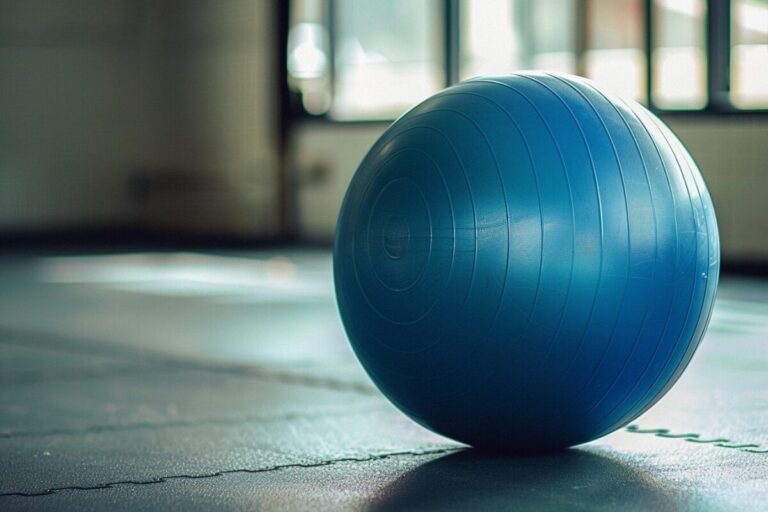Have you ever been mid-pull-up only to be stopped by a sharp twinge in your shoulder? It’s a common and frustrating interruption to what should be a triumphant moment of strength.
Pull-ups are one of those classic exercises that we all love (or love to hate) because they’re so effective at working a bunch of muscle groups at once. But when they’re causing more pain than gain, it’s time to take a step back and figure out why.
In this post, we’ll look at what’s going on in your shoulder during a pull-up. We’ll look at the anatomy, the right technique, and the common pitfalls that might be turning your workout into a bit of a pain in the… well, shoulder.
By the end of this, you’ll have a solid understanding of how to keep your shoulders happy and healthy while you’re scaling that pull-up bar.
Key Things to Know:
- Shoulder pain during pull-ups can stem from improper form, overuse, or pre-existing conditions.
- Proper technique, including grip width and controlled motion, is crucial for preventing strain.
- Warm-ups and cool-downs, exercise variation, and rest are key to avoiding injury.
- Alternative exercises and modifications can help maintain upper body strength without aggravating the shoulder.
Anatomy of Shoulder and its Role in Pull-Ups
When you’re cranking out pull-ups, every part of your shoulder is actively engaged.
Let’s break down the anatomy of your shoulder and see how it contributes to the movement of a pull-up, so you can understand what might be causing that nagging shoulder pain.
Muscles of the Shoulder
Your shoulder isn’t just a single muscle; it’s a complex group working together to move your arm.
The rotator cuff—comprising muscles such as the supraspinatus, infraspinatus, teres minor, and subscapularis—is crucial for stabilisation.
Then there’s the trapezius, which runs along your back and neck, playing a key role in the upward movement.
The latissimus dorsi, the broad muscle of the back, helps you add power to the pull-up. Other contributors include the rhomboids, which retract the shoulder blades, and the biceps brachii, which aids in flexing the elbow.
Don’t forget your arm muscles; they are equally important as they work in conjunction with your back muscles during a pull-up.
The Shoulder Joint and its Function
Think of the shoulder joint as the meeting point where the top of your arm bone fits into the socket of your shoulder blade. This ball-and-socket arrangement gives you a remarkable range of motion, allowing movements in all directions.
The joint is surrounded and protected by a “cuff” of tendons and muscles, which provide the needed stability especially during complex exercises, like pull-ups.
Connection Between Shoulder Movements and Pull-Ups
Now, how does all this anatomy harmonise during a pull-up?
As you grip the bar and pull yourself upwards, your back muscles, including the latissimus dorsi, and your arm muscles work in unison.
Shoulder function hinges on a combination of muscle strength, joint stability, and flexibility.
If these elements are off-kilter – perhaps your muscles are tight or your form is off – you may experience shoulder pain during pull-ups.
This pain could stem from improper technique which puts undue stress on the shoulder joint and the associated muscles. Proper form and muscle conditioning are essential for a pain-free experience, so it’s not just about pulling with brute force but engaging the right muscles in the right way.
Understanding Shoulder Pain from Pull-Ups
Experiencing shoulder pain during or after pull-ups can be both perplexing and frustrating. If you feel discomfort or aching in your shoulder joint, it’s crucial to pinpoint the cause.
Common issues often stem from tension in the rotator cuff muscles—which play a pivotal role in shoulder movements—or from a couple of specific injuries like a rotator cuff injury or tear.
Several factors can contribute to shoulder pain from pull-ups:
- Rotator cuff injury: It’s comprised of muscles and tendons that stabilise the shoulder. Strain or tears here can cause significant discomfort.
- Impingement or bursitis: These occur when the shoulder blade’s movement irritates or compresses the rotator cuff tendons.
- Arthritis: Osteoarthritis can cause stiffness and pain, making pull-ups more challenging.
- Tendinitis: Overuse can lead to inflamed tendons, and this inflammation can lead to pain when doing pull-ups.
- Instability: If your shoulder feels loose or slips during pull-ups, this could signal underlying instability in the joint.
Also, bad form in your pull-up technique could exacerbate the aching by placing undue stress on the shoulder joint, increasing the risk of inflammation or injuries like shoulder impingement.
Remember to warm up properly, ensuring your muscles are prepared for the exercise.
Moreover, honestly assess your technique—are you overextending or performing the movement with jerky motions? Both can lead to trouble.
Have you considered the role of frozen shoulder or weakness in the muscle area? They may go unnoticed during daily activities, yet become apparent when the shoulder is under stress.
Common Causes of Shoulder Pain During Pull-Ups
When you’re pulling yourself up and feel a sharp twinge in your shoulder, it’s crucial to consider what might be causing the discomfort. Let’s probe into some of the typical reasons your shoulders may be rebelling during this exercise.

Improper Form and Technique
You might be familiar with the saying “form is everything,” and it’s especially pertinent to pull-ups.
Poor form can lead to disproportionate strain on your shoulder joints. This includes the wrong grip width or angle, and not engaging the right muscles.
A proper form involves a controlled, fluid motion that keeps your body stable and minimises undue stress on any one area.
Overuse and Muscle Strain
Ever noticed how your muscles protest after doing the same movement over and over? That’s probably your body hinting at overuse or a potential repetitive stress injury.
By subjecting your shoulder muscles to repeated strain without proper rest, you can inadvertently cause muscle strain.
Remember, it’s not only about how many pull-ups you can do, but also about injury prevention through adequate rest and recovery.
Pre-existing Shoulder Conditions
If you’ve had a shoulder issue in the past, doing pull-ups might trigger that old niggle or pain.
Conditions like tendinitis, impingement, or a tear in your rotator cuff can spell trouble if you’re not careful. These ailments can manifest from a history of injuries or wear and tear over time, so it’s key to be aware of your body and possibly seek professional advice if you suspect a pre-existing condition.
Treatment and Management of Shoulder Pain
Experiencing shoulder pain during pull-ups can be daunting, but with the right approach, it’s manageable. Identifying effective treatment and managing the discomfort is essential in your journey to recovery.

Immediate Pain Relief Methods
Ice: Applying cold compresses or ice packs to the affected area can help reduce inflammation and pain. It’s often recommended to ice the shoulder for about 15-20 minutes every couple of hours during the initial stages after injury.
Rest: Taking a break from activities that exacerbate your shoulder pain is crucial. While total immobility isn’t advised, moderating your activities to avoid further strain on the shoulder can be beneficial.
Over-the-Counter Medication: Nonsteroidal anti-inflammatory drugs (NSAIDs) like ibuprofen can help relieve pain and inflammation. However, it’s important to follow the dosage instructions or consult a doctor if the pain persists.
Rehabilitation and Strength Training
Stretching and Mobility Exercises: Incorporating stretches can improve flexibility and reduce tension in the shoulder. Gentle arm circles, shoulder stretches, and other mobility exercises can promote healing and prevent future injuries.
Rehabilitation: Working with a physiotherapist can significantly aid in your rehab process. They might suggest specific movements to strengthen your shoulder and improve your range of motion tailored to your condition.
Surgical and Non-surgical Treatments
Consultation with a Doctor: If your pain doesn’t improve with initial treatments, it’s wise to consult a healthcare professional. They can diagnose the underlying cause of your pain and suggest appropriate treatment.
Non-surgical Treatments: Many shoulder issues can be resolved without surgery, through a carefully planned mix of rest, rehabilitation, and medication.
Surgical Options: In some cases, surgery might be necessary to repair the damage within the shoulder. Options range from minimally invasive arthroscopy to more extensive procedures, but these are typically considered when other treatments have proven ineffective.
Preventing Shoulder Pain from Pull-Ups
Pull-ups are a potent exercise for building upper body strength, but without proper care, they can lead to shoulder discomfort. Here are actionable steps to ensure you maximise the benefits while minimising the risks.

Correct Pull-Up Technique
Ensuring you perform pull-ups with proper form is crucial.
Begin by gripping the bar slightly wider than shoulder-width apart with your palms facing away from you. As you pull yourself up, your elbows should move down and back, and you should aim to bring your chin above the bar.
Subtle nuances in form, such as a neutral grip, can reduce strain on the shoulders.
If you’re uncertain about your technique, a session with a personal trainer can provide you with valuable insights tailored to your body.
Incorporating Warm-Ups and Cool-Downs
Never underestimate the importance of warming up. By preparing your muscles with dynamic movements and stretching, you increase blood flow and flexibility, thus reducing the risk of injury.
Before tackling pull-ups, try some shoulder circles and arm raises. Post-workout, a cool-down with static stretches can aid muscle recovery and alleviate tightness.
Exercise Variation and Rest Periods
While pull-ups are excellent, variety is key. Incorporating different types can prevent overuse injuries—consider trying neutral-grip pull-ups for a change.
Additionally, listen to your body; if you feel pain, give yourself a rest.
Balance your workout volume; avoid doing too many pull-ups too soon. Rest periods and days off are as vital as the exercise itself for muscle recovery and injury prevention.
Remember, kipping pull-ups should be approached with caution, as improper execution can be hard on your shoulders, especially if you’re a beginner or returning to the gym after a break.
Training Alternatives and Modifications for Shoulder Pain
If pull-ups are causing you shoulder discomfort, don’t fret. There are plenty of effective alternatives and modifications that can enhance your upper body strength and mitigate any further pain.

Alternative Exercises for Upper Body Strength
When pull-ups become a pain rather than a gain, consider switching to other exercises that can build your upper body strength without straining your shoulders.
Lat pulldowns are an excellent choice, allowing you to adjust the weight and avoid the discomfort of full body lifts.
Similarly, bent-over rows target your back muscles, offering a stable way to strengthen without the need for overhead lifting.
For a gentler approach, the dead hang from a pull-up bar can improve your grip while decompressing your spine and shoulders. This exercise involves hanging with straight arms, but it’s crucial to exit this stretch gently to avoid any jarring movements that might aggravate your shoulders.
Modifications to Pull-Ups and Related Exercises
Modifying exercises is key to maintaining progress while keeping your shoulders safe. When attempting modifications, focus on the grips and descent to reduce strain.
For example, using a neutral grip (palms facing each other) during pull-ups can be less punishing on your shoulders.
If you’re determined to stick with pull-ups, initiate a more controlled descent: lower yourself slowly to extend muscle engagement safely.
Additionally, performing chin-ups, where your palms face you, can also relieve some of the pressures since your biceps will bear more of the load, sparing your shoulders from unnecessary stress.
For any lifting exercises, ensure that your form prioritises protection over pride; keeping your ego in check can prevent a lot of pain and injury.
By focusing on technique rather than weight or reps, and considering these alternatives and modifications, you’ll be sure to keep building strength without compromising your shoulder health.
Frequently Asked Questions About Shoulder Pain and Exercise

Why does my shoulder hurt when I do pull ups?
Pull ups can be tough on your shoulders if they’re not used to the strain. Your shoulder pain might be due to improper form, inadequate muscle strength, or previous injuries flaring up. Always ensure you’re performing the exercise correctly and gradually increase intensity.
What should I do if I experience shoulder pain during exercise?
If you’re feeling pain, stop the exercise and rest your shoulder. Applying ice can help reduce swelling and pain. However, persistent pain should be checked by a doctor to rule out injuries like rotator cuff strains or impingement syndrome.
How can I prevent shoulder injuries when doing pull ups?
Prevention is key, and it includes warming up properly and focusing on your form. Strengthening shoulder muscles and maintaining good shoulder mobility are also crucial. Aim to mix in some shoulder-strengthening exercises and stretches into your routine.
When should I see a doctor for my shoulder pain?
It’s sensible to consult a doctor if your shoulder pain persists for more than a couple of weeks, or if it significantly interferes with your daily routine or sleep patterns. Additionally, if you experience sharp or sudden pain, seek medical advice promptly to ensure it’s nothing serious.
What are some effective treatments for shoulder pain?
Treatment options for shoulder pain range from rest and physical therapy to more advanced methods like steroid injections or surgery, depending on the severity. Your doctor can provide a personalised treatment plan to address the specific cause of your pain.







